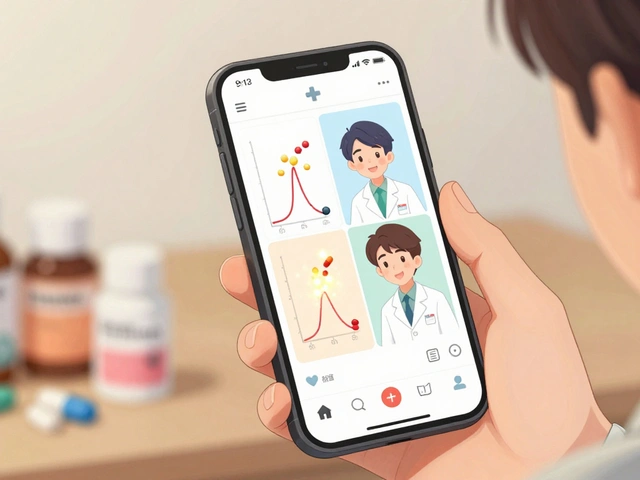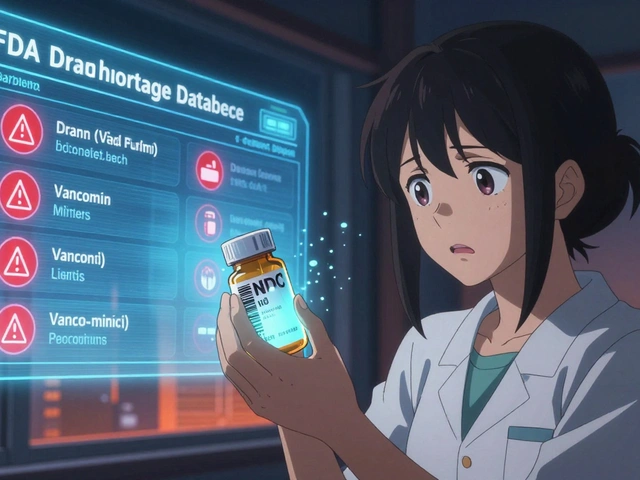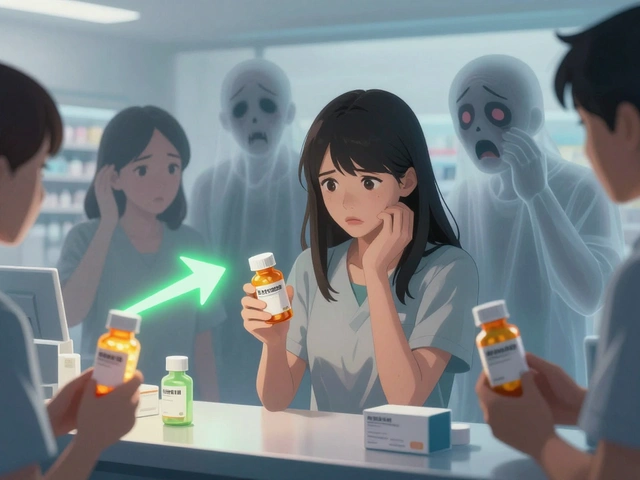Opioid Adrenal Risk Assessment Tool
Your Risk Assessment
What this means:
Important: This tool is for educational purposes only. It does NOT replace medical advice or diagnosis.
- If you experience fatigue, dizziness, nausea or low blood pressure, contact your doctor immediately
- Do not stop opioids abruptly if you have adrenal insufficiency
- Discuss with your healthcare provider about an ACTH stimulation test
Most people know opioids can cause constipation, drowsiness, or addiction. But few realize they can quietly shut down your body’s stress response - leading to a condition that can kill you if left unnoticed. Opioid-induced adrenal insufficiency isn’t a myth. It’s a real, documented, and dangerously underdiagnosed side effect of long-term opioid use.
How Opioids Silence Your Stress Hormones
Your body has a built-in alarm system called the HPA axis - hypothalamus, pituitary, adrenal glands. When you’re under stress - whether it’s surgery, infection, or even a car accident - this system kicks in. The hypothalamus signals the pituitary to release ACTH, which tells your adrenal glands to pump out cortisol. Cortisol keeps your blood pressure up, your blood sugar stable, and your immune system in check. Opioids don’t just block pain signals. They also bind to receptors in the brain that control this entire chain. Studies show that even moderate doses of opioids - like oxycodone, hydrocodone, or methadone - can suppress ACTH and cortisol production. It’s not damage to the adrenal glands. It’s the brain telling them: “Don’t respond.” This isn’t a theory from 1980s research. A 2024 review in Frontiers in Endocrinology confirmed this mechanism is still being missed by doctors today. And it’s not rare. About 5% of Americans on long-term opioid therapy have this condition. That’s tens of thousands of people whose bodies can’t handle stress because their alarm system is turned off.Who’s at Risk?
You don’t need to be on high doses for years to develop this. But risk goes up sharply with:- Chronic use over 90 days
- Daily doses above 20 morphine milligram equivalents (MME)
- Use of methadone or fentanyl - these are especially potent at suppressing the HPA axis
- Having other chronic illnesses like cancer, pancreatitis, or back pain that require ongoing opioids
What Does It Feel Like?
This is where things get tricky. The symptoms of adrenal insufficiency - fatigue, nausea, dizziness, low blood pressure, weight loss - look exactly like the side effects of chronic pain or depression. Or even opioid withdrawal. A 25-year-old man in a 2015 case report was admitted after a critical illness. He had high calcium levels, low blood pressure, and extreme fatigue. Doctors thought it was sepsis or cancer. Only after ruling everything else out did they test his cortisol. It was dangerously low. His methadone use had suppressed his adrenal function. Once they stopped the opioid and gave him hydrocortisone, he improved within days. Another patient with chronic pancreatitis developed the same symptoms. He’d been on oxycodone for two years. No one connected the dots until he collapsed during a minor infection. His cortisol was barely detectable. If you’re on opioids and you feel “just tired all the time,” or you get dizzy standing up, or you’ve lost your appetite for no clear reason - don’t assume it’s just pain or stress. Ask: Could this be my adrenals?
How Is It Diagnosed?
There’s no blood test you can take at your pharmacy. Diagnosis requires a specific test: the ACTH stimulation test. Here’s how it works:- Your doctor draws blood to measure your morning cortisol level. If it’s below 3 mcg/dL (100 nmol/L), that’s a red flag.
- You get a shot of synthetic ACTH.
- They draw blood again at 30 and 60 minutes.
- If your cortisol doesn’t rise above 18 mcg/dL (500 nmol/L), you have adrenal insufficiency.
Why It Can Kill You
Adrenal insufficiency isn’t dangerous when you’re sitting at home. But if you get sick - flu, pneumonia, surgery, even a bad fall - your body needs cortisol to survive. Without it, your blood pressure crashes. Your blood sugar plummets. You go into shock. This is called an Addisonian crisis. It’s fatal if not treated immediately. And because most doctors don’t suspect opioid-induced adrenal insufficiency, patients often get misdiagnosed as having sepsis, heart failure, or dehydration. By the time they’re treated, it’s too late. A 2020 systematic review of 27 studies confirmed that untreated adrenal insufficiency can lead to death. And with over 5% of the U.S. population on chronic opioids, we’re talking about a hidden epidemic.
Can It Be Fixed?
Yes. And that’s the good news. If caught early, opioid-induced adrenal insufficiency is completely reversible. When patients stop or taper opioids, their cortisol levels return to normal - usually within weeks to months. In the 2015 case report, the 25-year-old man’s cortisol returned to normal within six months after stopping methadone. He didn’t need lifelong steroids. But here’s the catch: You can’t just quit opioids cold turkey if you have adrenal insufficiency. Your body is already struggling to handle stress. Stopping opioids suddenly can trigger an adrenal crisis. Treatment follows two steps:- During crisis: IV fluids and hydrocortisone injections - same as for any adrenal emergency.
- Long-term: Gradual opioid taper under medical supervision, with temporary glucocorticoid replacement until your adrenals wake up.
What Should You Do?
If you’re on chronic opioids - especially above 20 MME daily - and you’ve had unexplained fatigue, dizziness, or nausea:- Ask your doctor for an ACTH stimulation test.
- Don’t wait for a crisis. Screening is simple and saves lives.
- If you’re scheduled for surgery, tell your anesthesiologist about your opioid use - they may need to give you extra steroids during the procedure.
- If you’re tapering off opioids, ask about steroid coverage during withdrawal.
What’s Next?
Right now, guidelines don’t require routine screening for opioid-induced adrenal insufficiency. That’s changing. More hospitals are starting to test patients on high-dose opioids before surgery. Research is moving toward defining exact thresholds for diagnosis and identifying which opioids carry the highest risk. But until then, awareness is your best defense. This isn’t about fear. It’s about knowledge. Opioids can help with pain - but they can also silently disable your body’s ability to survive stress. If you’re on them long-term, make sure your adrenal glands are still listening.Untreated, this condition can kill. Treated, it’s fully reversible. The difference is asking the right question.





Jeremy Samuel
November 19, 2025 AT 20:50Alyssa Torres
November 21, 2025 AT 07:11Summer Joy
November 21, 2025 AT 12:34Aruna Urban Planner
November 23, 2025 AT 06:35Nicole Ziegler
November 23, 2025 AT 18:56Bharat Alasandi
November 25, 2025 AT 06:28Kristi Bennardo
November 26, 2025 AT 04:14Shiv Karan Singh
November 27, 2025 AT 06:06Ravi boy
November 27, 2025 AT 16:46Matthew Peters
November 29, 2025 AT 00:15Ravinder Singh
November 30, 2025 AT 07:29Russ Bergeman
December 1, 2025 AT 15:13